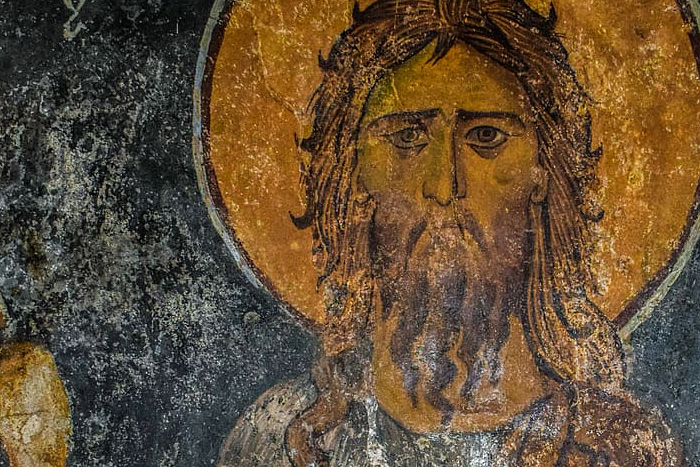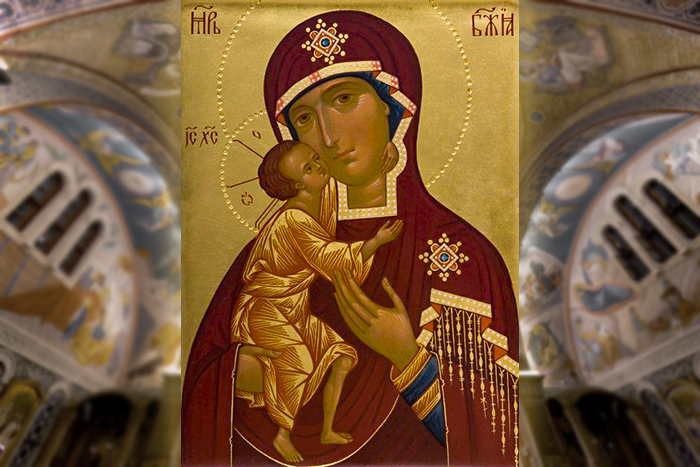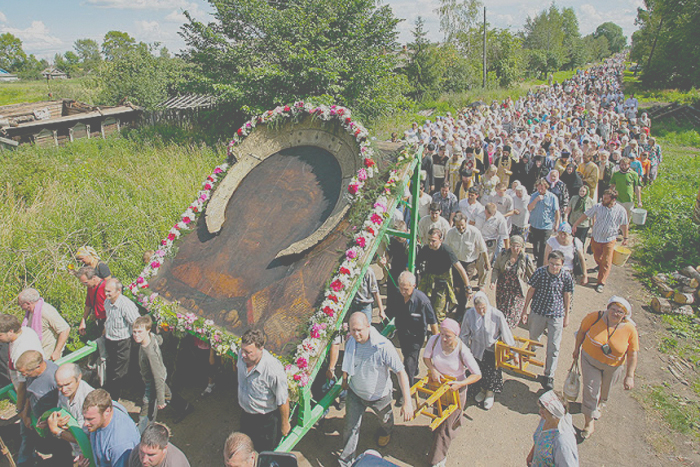
There are three general representations of the Resurrection in Orthodoxy: the Harrowing of Hades, Christ triumphantly rising from the tomb, and the angel appearing to the myrrh-bearing women beside the empty tomb (example at the top of this post). The first composition, which is technically an icon for Holy Saturday, would not contain the Mother of God as she was still alive when Christ descended into Hades, and the second composition is not particularly common in the Orthodox Church; it is in the third type of icon – of the myrrh-bearing women attending the empty tomb, where the Theotokos is present… though it is not always immediately obvious.
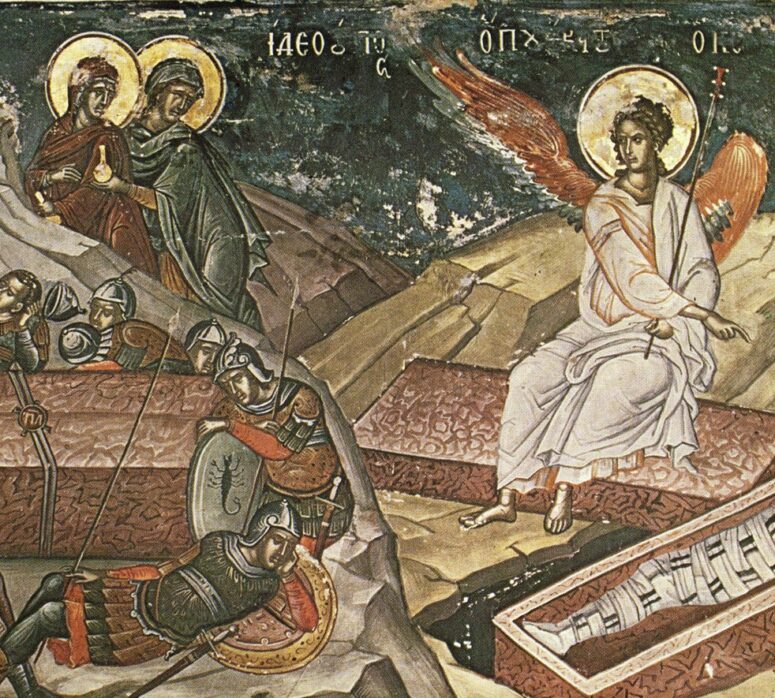
The Mother of God is not described in the Gospels as being present on the Sunday morning when women coming to attend to the body of Jesus saw the empty tomb, and Mary Magdalene specifically met the risen Christ, becoming the one to proclaim the resurrection to the Apostles. However, in his work The Life of the Virgin, St Maximus the Confessor draws on the Church’s tradition to say that Mary was “inseparable from the tomb” and so was there on the Sunday morning when the other women arrived. The reason the Evangelists didn’t include this in their Gospels, St Maximus adds, was “to preclude any doubt and so that no one would take it as a reason for disbelief that the vision of the Resurrection was reported by the mother.”

This belief has been preserved in the iconography of the Church too because many icons of the myrrh-bearing women, when studied closely, contain the Mother of God with the other women. For example, in the fresco on the left, it can be seen that the of the two myrrh-bearing women shown above the sleeping guards, the women on the left wears the same deep red robes of the Mother of God, with the same three stars on the shoulders and head covering that represent her ever-virginity (see Icons of the Mother of God for a clearer example). Other icons, like Russian icon on the right, are more explicit in that the MP ƟY (Gr. Mater Theos; Mother of God) inscription is clearly written in her halo.
The presence of the Mother of God at the tomb has also been preserved in the hymns of the Church. The Paschal Hymn to the Mother of God imagines the angel’s words to the Mother of God at the empty tomb:
(Romanian melody, reminiscent of the pealing of bells at Easter. Incidentally the icon in the video also shows the Mother of God, with Mary Magdalene, at the feet of the Risen Christ)
The Angel cried to the Lady Full of Grace:
Rejoice, O Pure Virgin!
Again I say: Rejoice!
Your Son is risen from His three days in the tomb.
With Himself He has raised all the dead.
Rejoice, all ye people!
Shine, shine, O New Jerusalem,
The glory of the Lord has shone on you.
Exult now and be glad, O Zion,
Be radiant, O Pure Theotokos,
In the Resurrection of your Son!
The hymn likely informs the inclusion of the Mother of God in Resurrection Icons and the imagined conversation of the angel is intended to capture the festive mood of Easter. It is similar to the ‘extended’ conversation between Gabriel and Mary contained in the Akathist Hymn or the words of reproach from Christ to Judas in hymns during Holy Week; a dramatic way of drawing out profound meaning contained in the more concise Gospel narratives. However, this does not mean that the inclusion of the Theotokos in the scene at the empty tomb is “symbolic”, much as the Apostle Paul’s inclusion in Pentecost icons is non-literal. Just as the Mother of God stayed with her Son throughout His crucifixion, when all-but-one of the Apostles had fled, it is inconceivable to imagine she did not keep vigil over the Sabbath and was absent when the other women disciples came to the grave. And the fruit of such vigilance from Christ’s Mother was the early revelation of her Son’s life-giving resurrection:
“Again I say: Rejoice!”
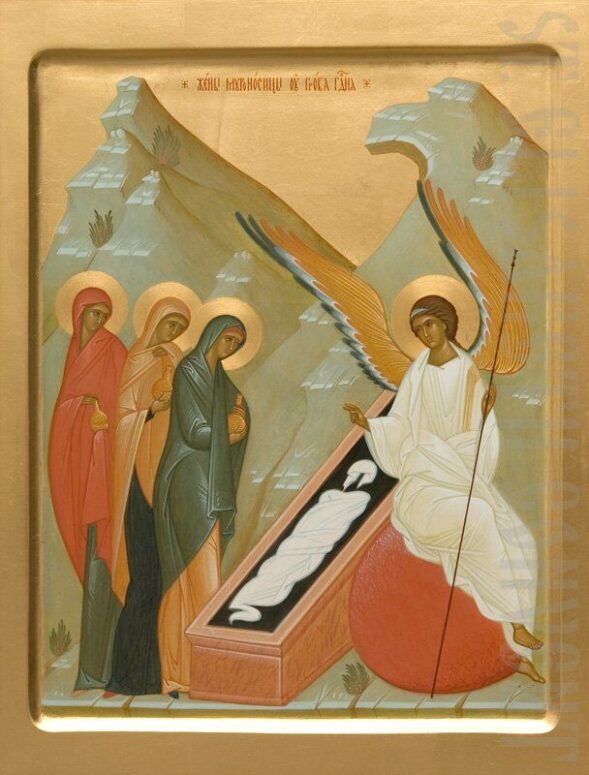
Source: https://iconreader.wordpress.com/2015/04/15/the-place-of-the-theotokos-in-icons-of-the-resurrection/


